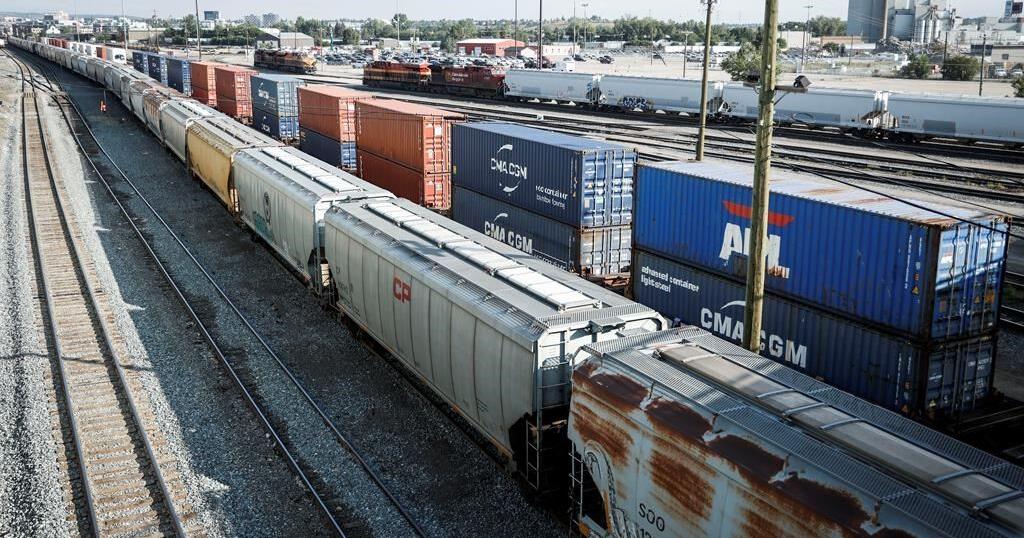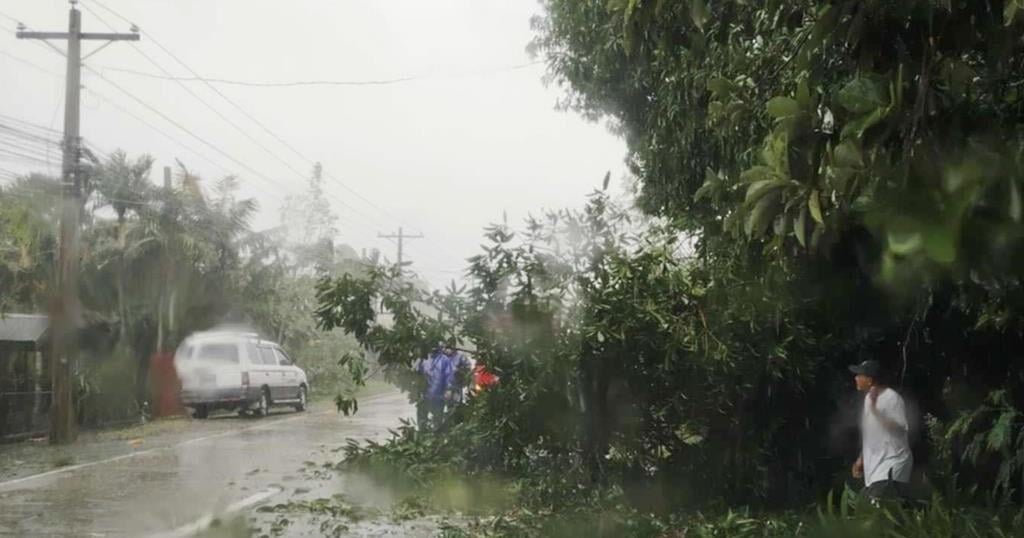Here is a roundup of stories from CanadaNewsMedia designed to bring you up to speed…
CN, CPKC rail service set to resume after dispute
Traffic at Canada’s two largest railways is slated to resume today as a rail work stoppage comes to an end following a Saturday decision from the federal labour board.
Canadian National Railway Co. and Canadian Pacific Kansas City shut down railways last Thursday, locking out workers and disrupting freight traffic nationwide and commuter lines in the Toronto, Montreal and Vancouver areas.
The lockouts affected more than 9,000 railway workers amid an ongoing contract dispute between the two companies and the Teamsters union.
The work stoppage came to an end just after the clock struck midnight Monday based on a decision issued on Saturday by the Canada Industrial Relations Board ordering both companies and their workers to resume operations ahead of binding arbitration.
The president of the Teamsters Canada Rail Conference issued a statement Saturday protesting the CIRB’s decision and vowed to appeal the ruling in court.
Here’s what else we’re watching…
GO Transit services back today after rail dispute
Thousands of Ontario riders will return to their normal commute this morning as a train line and station are set to resume service with the work stoppage by CN and CPKC set to end.
Metrolinx spokesperson Andrea Ernesaks said Sunday that services on the Milton GO line and at Hamilton GO station would start running again the next day.
However, she added there may be some schedule adjustments throughout the day as normal service is restored.
Ernesaks said Metrolinx will also have additional staff and shuttles on hand in the event it needs to deploy them, which she said is standard practice with a schedule change.
In addition to rail workers and freight traffic, the shutdown also affected 30,000 commuters in the Greater Toronto Area, Montreal and Metro Vancouver, areas where some trains run on CPKC-owned lines.
Immigration, housing on tap at cabinet retreat
Housing and immigration will take centre stage today as the federal cabinet retreat in Halifax moves into its first full day of meetings.
The annual end-of-summer cabinet gathering is intended to set the agenda for the fall sitting of Parliament which begins three weeks from today.
The Liberals are in a make-it-or-break-it moment, following more than a year of slumping polling numbers and at most a year left before the next federal election.
Prime Minister Justin Trudeau is scheduled to take questions from the media early this morning, something he has done far less frequently since the Liberals lost a critical byelection in a Toronto stronghold at the end of June.
Ministers are also expected to provide updates on the government’s ongoing revamp of the temporary foreign workers program, as well as national child care and electric vehicle tariffs.
Crews face tree danger as B.C. wildfires abate
Despite heavy rain in parts of British Columbia over the weekend, firefighter still say strong winds are creating some tree hazards for crews.
The BC Wildfire Service says in its latest update that the number of active blazes in the province has fallen to around 311, continuing a downward trend where about 240 fires were burning entering the weekend.
The wildfire service says while much of the southern part of B.C. received rain and some parts had heavy precipitation, it was accompanied by winds gusting up to 102 kilometres per hour.
The wind “blew trees down along fire lines in the south” and forced a fire camp in Invermere, B.C., to move to another location, but the service says no one was injured.
The number of out-of-control wildfires in the province has dropped to about 87, with 28 per cent of B.C.’s active blazes now being held and 44 per cent classified as “under control.”
New round of Calgary water rationing kicks in
Thirstier lawns, shorter showers and fewer but fuller dishwasher loads are in store for Calgarians — again — as a troubled water main undergoes a new round of repairs starting this week.
The Bearspaw South Feeder Main in the city’s northwest burst in early June, drenching a stretch of the Trans-Canada Highway and forcing the city to impose onerous restrictions on water use for several weeks.
The rationing had just started to ease earlier this month when Mayor Jyoti Gondek announced several additional problem spots had been detected on the more than 10-kilometre pipe that would need to be fixed before the cold weather settles in.
Crews are to dig up parts of the pipe and reinforce weak spots with concrete, with the job expected to last about a month.
While the pipe is shut down for the repairs, there’s a return to Stage 4 water restrictions, meaning no outdoor use of potable water.
This report by The Canadian Press was first published Aug. 26, 2024.






















